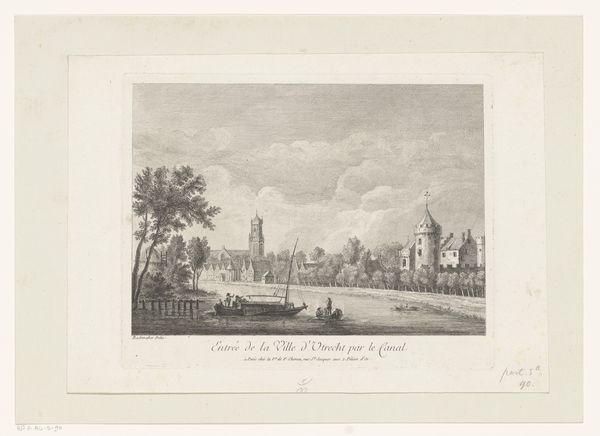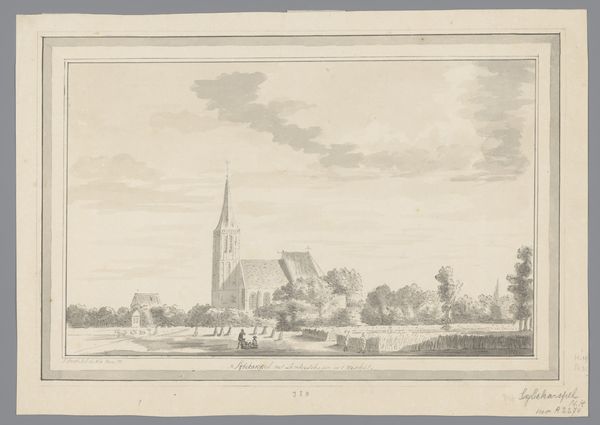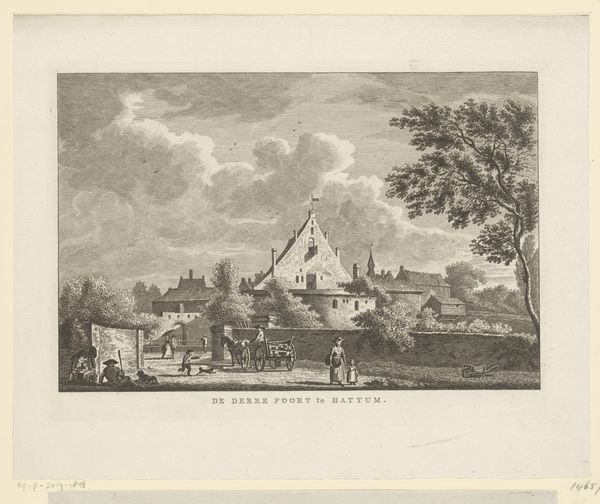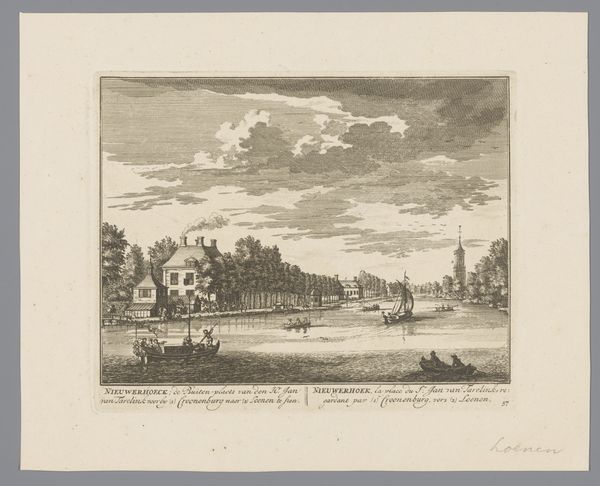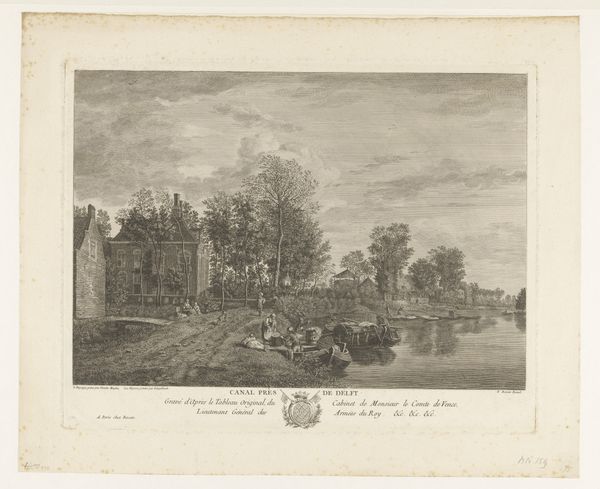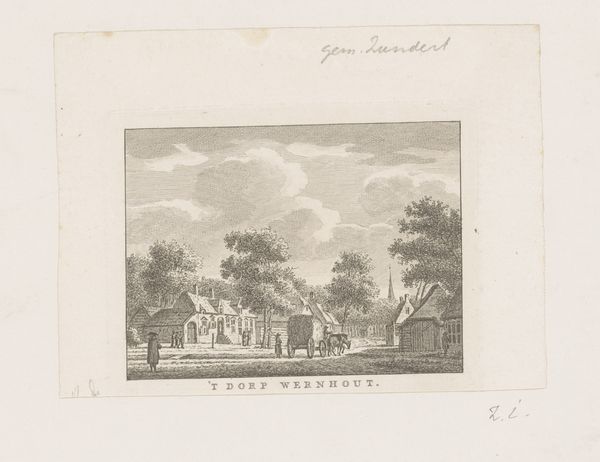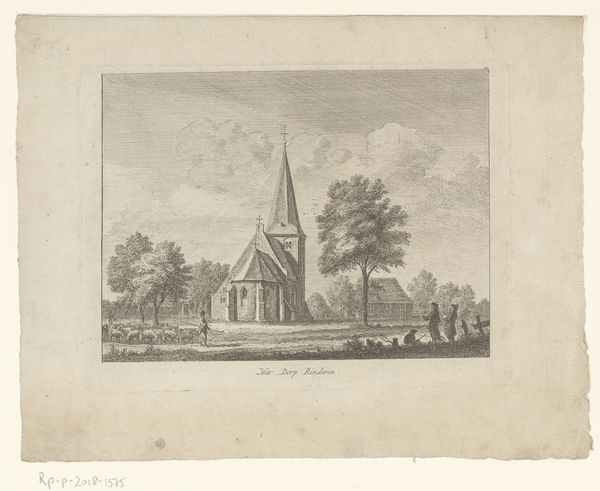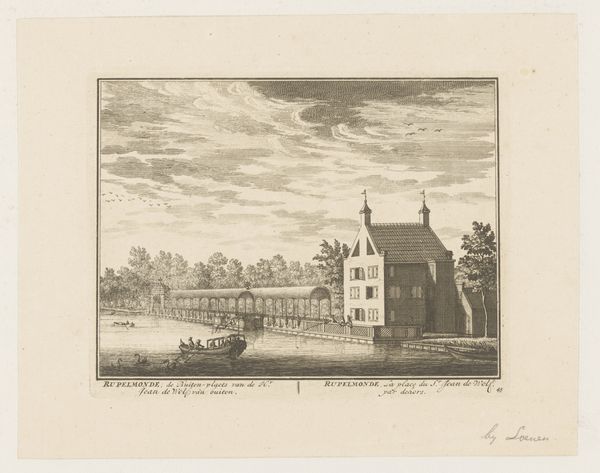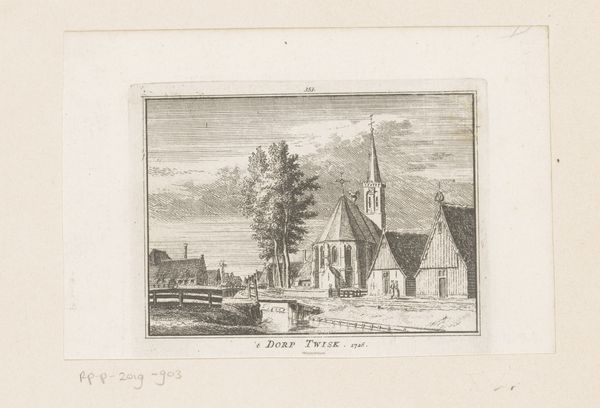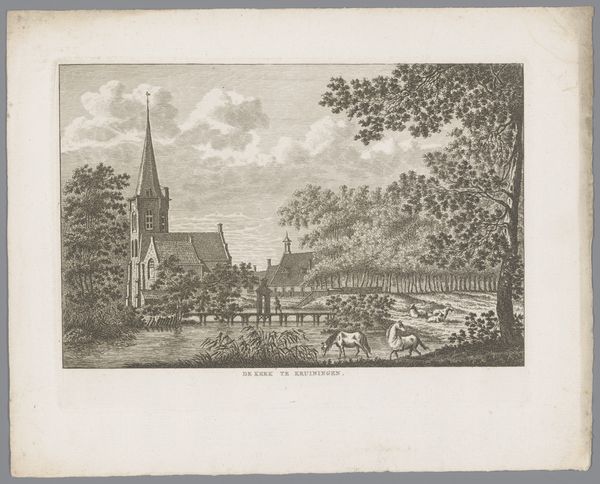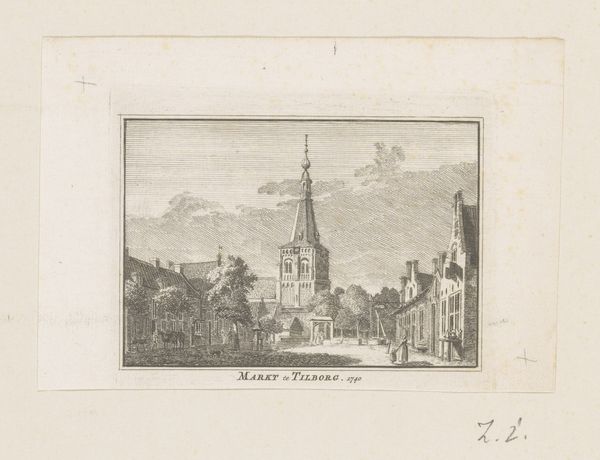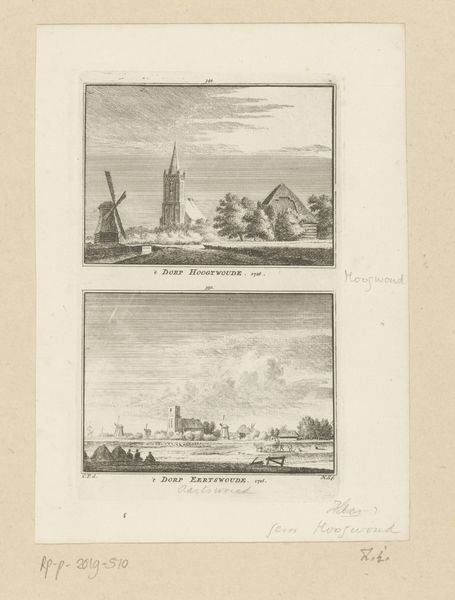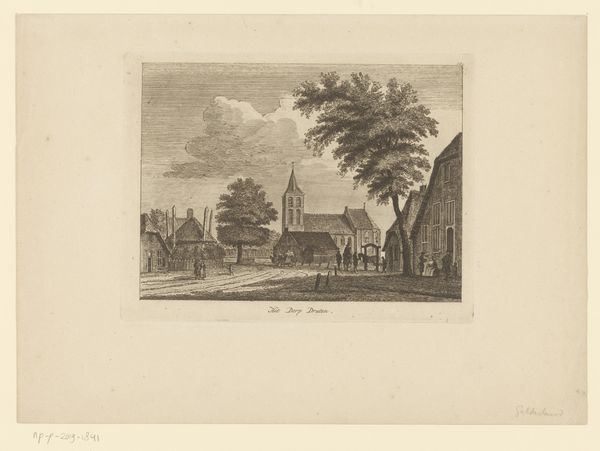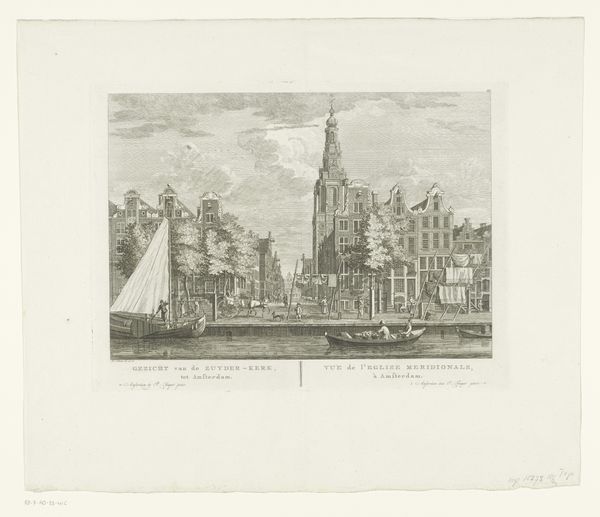
print, engraving
#
dutch-golden-age
# print
#
old engraving style
#
landscape
#
15_18th-century
#
cityscape
#
pencil work
#
engraving
Dimensions: height 159 mm, width 210 mm
Copyright: Rijks Museum: Open Domain
Curator: Here we have Hendrik Spilman's "Dorpsgezicht in Balgoij in Gelderland," an engraving dating from around 1770 to 1800, from the Rijksmuseum collection. Editor: My initial reaction is that it exudes a sense of peaceful isolation. The muted tones, created by the engraving technique, emphasize the horizontality of the landscape, and the sky above feels expansive and untamed, yet also delicately drawn. Curator: Yes, Spilman captures that Dutch Golden Age fascination with landscape, imbued with civic and religious symbolism. Churches were more than places of worship, weren't they? The church, a beacon with its high steeple, looms over the diminutive figures, indicating the imposing role of faith and community in daily life. Editor: Indeed. The steeple functions almost as a compositional keystone, anchoring the airy expanse of the cloudscape behind it. There is a deliberate contrast at play between the fine details of the steeple, and the sketchier rendering of the surrounding trees. Curator: Note also that while appearing somewhat realistic, this isn't a purely objective record. Consider the tradition of topographical prints in Dutch culture. These weren't just postcards. The engraving signifies local pride and collective identity, as Balgoij appears in a grand, timeless light, its church almost reaching heavenwards. The medium—an engraving—creates a sense of precision that speaks to stability and order. Editor: A formal counterpoint between the crafted steeple and the natural world that emphasizes the balance between structure and spontaneity, perhaps reflecting an aspiration for harmony between humanity and the environment? The formal simplicity almost echoes a theological idea – something eternal emerging from something more ephemeral and organic. Curator: It's an image brimming with Dutch Golden Age visual grammar. What resonates with me most is the timelessness embedded in the image – as if the very values and sense of identity captured persist even now. Editor: Yes, though restrained, it still compels us to look more deeply into our world and maybe also within.
Comments
No comments
Be the first to comment and join the conversation on the ultimate creative platform.
